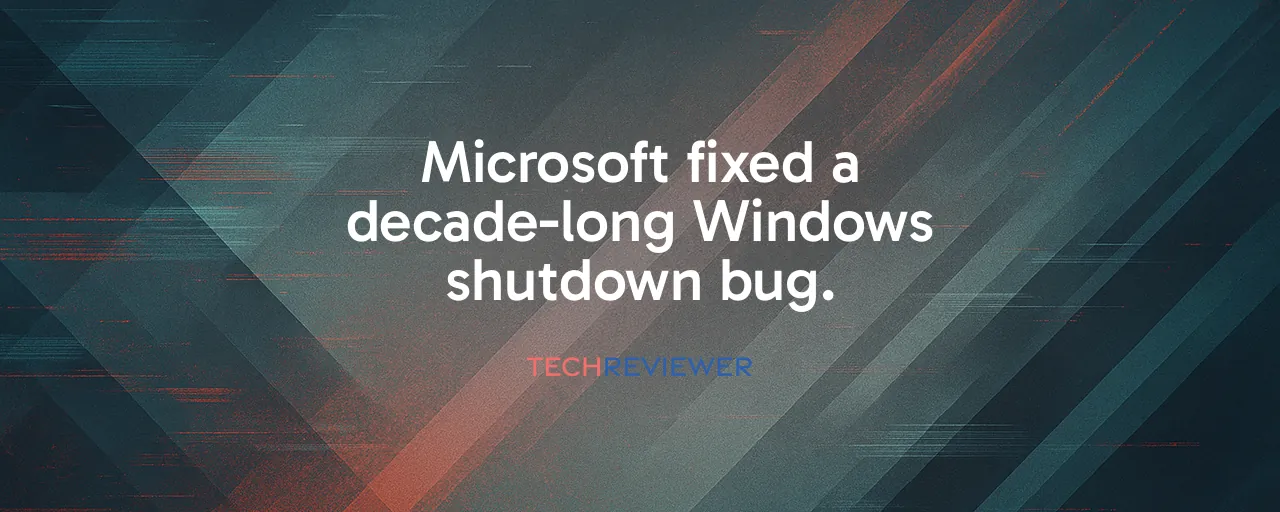A Fix Ten Years in the Making
Microsoft rolled out a patch that corrects a problem users have dealt with since Windows 10 came out in 2015. People picked 'Update and shut down' expecting their computers to power off completely after installing updates. The machines restarted and stayed on at the login screen instead. This happened on both Windows 10 and 11 systems.
The company included the solution in Windows 11 version 25H2, specifically build 26200.7019. They also put it in the optional October 2025 update labeled KB5067036. Microsoft plans to push it to everyone through the November 2025 Patch Tuesday release. Their support pages explain the change addresses the root cause that stopped the power-off command from working right.
What Went Wrong Inside the System
Updates in Windows need a restart into a special offline mode to swap out core files safely. The system has to boot into this temporary state because it cannot replace files while running normally. The shutdown order got lost or ignored during that switch.
Engineers traced the glitch to the Windows Servicing Stack. This part handles all update installations and coordinates with power management. They adjusted it so the power-off request carries through every step, even with features like Fast Startup active or other tasks running.
Laptop Users Felt the Pain Most
People with portable computers ran into the worst troubles. They chose the option before bed or travel to save battery and keep things quiet. Many woke up to find devices warm, fans spinning, and power drained because the PC sat at the login prompt all night.
Office IT teams saw the same thing on company laptops. Deployments meant to finish overnight left machines ready for anyone to access. Support staff handled endless tickets about unexpected behavior. Home users with less experience often picked the wrong menu item by mistake since the choices sit right next to each other.
Corporate Deployment Headaches
Large organizations manage thousands of Windows devices through tools like WSUS or Configuration Manager. Administrators scheduled update-and-shutdown routines to run after hours. The bug turned those plans upside down when systems rebooted and waited for input instead of powering off.
One mid-sized firm reported over 500 laptops affected in a single rollout. Staff arrived to charged-but-running machines and delayed starts. Another enterprise tracked the issue across three years of monthly updates, logging hundreds of hours in workaround time.
Reddit Threads Tell the Story
Online forums overflowed with complaints long before Microsoft spoke up. A popular Windows support subreddit started a thread in 2016 that gathered thousands of replies over the years. Users posted screenshots of login screens after overnight attempts and shared scripts to force shutdowns manually.
Tech sites like Windows Latest kept records too. Reporters noted the problem appeared in every major Windows release. They pressed Microsoft for comments but received silence until the September 2025 Insider preview mentioned the upcoming repair.
Trade-Offs in the Patch Release
The October 2025 update delivered the long-awaited fix but introduced a secondary issue affecting Task Manager. Some users found that closing the application did not terminate all its processes, leaving instances running in the background. Microsoft acknowledged the problem and provided command-line instructions to force termination, advising users to weigh the benefits of proper shutdowns against this temporary limitation.
The optional nature of KB5067036 meant only proactive users received the fix early. Systems still running unsupported versions of Windows 10 after October 14, 2025, will not receive the update at all, leaving them vulnerable to both the original bug and its consequences, including unnecessary power drain and security exposure.
Broader Lessons for Update Design
This decade-long flaw highlights how deeply embedded system components can harbor persistent issues when command states are not preserved across reboots. Microsoft's eventual fix involved reinforcing the servicing stack to maintain user intent through offline updates, a change likely to influence future design standards for update workflows.
Reliable shutdowns reduce energy waste across the global Windows install base, which exceeds 1.4 billion devices. Unnecessary runtime from failed shutdowns contributed to avoidable power consumption and heat output, particularly on mobile devices. Now, automated update schedules can proceed with confidence, improving efficiency for both home users and enterprise IT teams.
